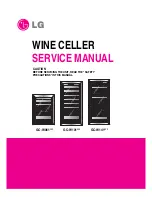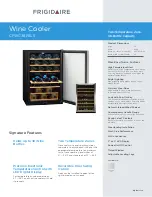
Care and maintenance
Page EN-15
Care and maintenance
WARNING
Risk of electric shock!
Touching live parts may result in severe
injury or death.
■
Before cleaning, pull the mains plug
out of the socket.
■
When pulling out the mains plug,
always take hold of the mains plug it-
self and never the mains cord.
CAUTION
Danger to children and people with im-
paired physical, sensory or mental abil-
ities!
■
Cleaning and user maintenance must
not be carried out by children unless
they are supervised.
Risk of injury!
Sharp-edged appliance parts beneath
the appliance may lead to cuts.
■
Exercise caution when cleaning the
appliance.
NOTICE
Risk of damage!
The surfaces and appliance parts can be
damaged through improper handling.
■
Never use harsh, granular, soda, acid,
solvent-based or abrasive cleaners.
These attack the plastic surfaces.
All-purpose cleaners with a neutral
pH are recommended.
■
Door seals and plastic parts are sen-
sitive to oil and grease. Remove con-
taminants as quickly as possible.
■
Only use soft cloths.
Checking and cleaning door
seals
The door seals must be checked regularly so
that no air can enter the appliance.
1. To test them, clamp a thin piece of paper
in various places. The paper should be
difficult to pull through at all points.
2. If the seal is not uniform everywhere:
Warm the seal in the appropriate places
in front of you with a hair dryer and pull it
out with your fingers.
3. Only clean dirty seals with clean water.
Clean exterior
– Painted surfaces
Use only light pH-neutral soapy water.
– Stainless steel surfaces
Use special stainless steel cleaner from a
specialist shop. Never use polish.
Cleaning the back of the
appliance
Dust deposits on the back of the appliance
can affect the appliance’s performance and
lead to increased energy consumption.
• Remove dust and clean the back of the
appliance and the compressor once or
twice a year. Use a soft brush to do this.
Defrosting the appliance
No defrosting is required as the appliance
has an auto-defrost feature. Frost and ice are
automatically defrosted and the thaw water
is collected in a thaw water container on the
reverse side of the appliance. The thaw water
evaporates as a result of the heat generated
by the motor.












































